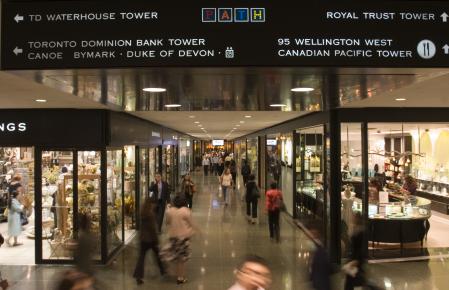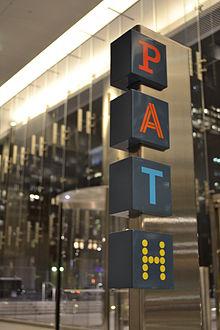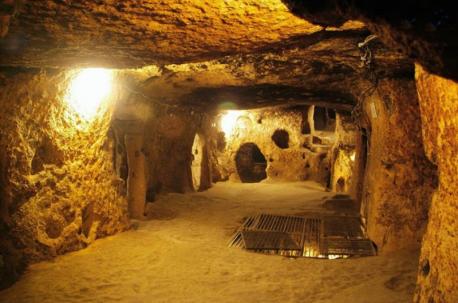Results: The Underground City
Published on 07/19/2018
QUESTIONS
GO to COMMENTS
Comments
1.
1.
Looking to break into Toronto's underground scene? Centrally-located in downtown Toronto, PATH is literally the ultimate underground shopping experience. What started out in 1900 as a pedestrian pathway has transformed into a tunnel network a little less than 19 miles (30 km) long with more than 1,200 retailers, including around 40 restaurants. 75 buildings, 6 subway stations, 9 hotels, and Toronto's busiest transit hub – Union Station – are accessible through the PATH. The PATH provides links to some of Toronto's most popular tourist and entertainment attractions, including the Hockey Hall of Fame, Roy Thomson Hall, the Air Canada Centre and CF Toronto Eaton Centre. City Hall and Metro Hall are also connected through the PATH. According to Guinness World Records, PATH is the largest underground shopping complex in the world with 371,600 square metres (4,000,000 sq ft) of retail space. Have you ever navigated this underground city?

No
77%
1573 votes
Yes
19%
395 votes
I navigate it almost every day
3%
65 votes
2.
2.
Here are some interesting facts about the PATH you may or may not know. How many were you familiar with?

The Toronto Path is the largest shopping mall in North America with 1200 stores (50% more than the West Edmonton Mall!)
8%
163 votes
You can live your entire life in the PATH. With subway stations, retailer, businesses and grocery options, you could never come up for sunlight!
9%
189 votes
18 of the 25 tallest buildings in Toronto are connected by the PATH (and it's growing quickly)
6%
124 votes
The PATH map is always pointing North, to help navigate the system, although it can get confusing
5%
97 votes
Knew all
4%
82 votes
Knew none
80%
1629 votes
3.
3.
While Toronto's PATH may be the largest, it is by no means the only underground "city" in the world. Some of these are thriving public spaces, while others are more "tourist" attractions. How many of these have you been to?

Dixia Cheng, Beijing, China -- Beijing's underground city, Dixia Cheng, was built in the 1970s to serve as a shelter during invasions, bombings and nuclear attacks. The lengthy network of tunnels, often referred to as the Underground Great Wall, included almost 100 hidden entrances and, reportedly, were built with complete services such as schools, hospitals, and sleeping halls in case citizens needed to seek refuge for a longer period of time.
5%
104 votes
Edinburgh Vaults, Edinburgh, United Kingdom -- Beneath the streets of Scotland's capital lies a dark and damp world, dating back to the 18th century. The Edinburgh Vaults, also known as The South Bridge Vaults, are a series of chambers formed within the 19 arches of South Bridge.
6%
126 votes
Shanghai Tunnels, Portland, United States (photo above) -- Portland has its own underground city known as the Shanghai Tunnels, or the less common name: the Portland Underground. This intricate network reportedly once consisted of tunnel passageways linking Portland's Old Town, also known as Chinatown, to the central Downtown area. Unfortunately many of these subterranean spaces have been filled in during various public works projects, but a few of them are still there and open to explore.
4%
83 votes
Wieliczka Salt Mine, Krakow, Poland -- Located in the town of Wieliczka just 15 kilometres outside of Krakow, the Wieliczka Salt Mine was built back in the 13th century and has produced table salt continuously until 2007. One of the biggest tourist draws of Poland, this underground salt city has evolved from a series of dark caves to a complex labyrinth now comprising over 300 impressive kilometres of galleries, about 3000 chambers and nine floors, with the first three open to the public.
3%
58 votes
RÉSO, Montreal, Canada -- RÉSO, stemming from the French word réseau, meaning network, is one of Montreal's cornerstones. This giant maze runs under Montreal's streets in and around the Downtown area and houses a wide-range of shops, restaurants, hotels, galleries, seven metro stops, cinemas, a library and even apartment buildings.
6%
118 votes
Pilsen Historical Underground, Czech Republic -- The city of Pilsen, in the western part of the country, is home to Pilsen Historical Underground, a 20 km long labyrinth of passageways, cellars and wells built below the city streets in the 14th century. These cellars once served as storage space for food and barrels of beer and, some say, as an escape route in case of an attack. Legend has it that there is treasure buried within the cellar walls, although looting is discouraged.
1%
26 votes
Derinkuyu, Cappadocia, Turkey -- Cappadocia city, located in central Turkey, is home to no less than 36 underground cities, and at a depth of approx. 85 m, Derinkuyu is the deepest. Discovered in 1963, the subterranean network of tunnels and rooms include all the institutions and rooms you would find in a regular city: living quarters, stables, churches, storage rooms, refectories, and wineries – and the underground is said to have possibly held more than 20,000 people.
2%
42 votes
The tunnels of Moose Jaw, Moose Jaw, Canada -- Moose Jaw, located in Saskatchewan is home to a series of tunnels that have two separate stories. In the beginning of the 20th century Canada imposed its now infamous head tax on Chinese immigrants due to the fear that they would steal jobs away from locals. Afraid and unable to pay the tax, illegal Chinese immigrants were forced underground. Entire families lived here and worked in the local businesses above ground in exchange for food and supplies until the 1920s, when this underground maze acquired a new purpose: Due to the proximity to the US, the tunnels were used for transporting of booze to the US through Canada during the prohibition-era. Word has it Al Capone was connected to all the bootlegging, though that has never been proven.
5%
97 votes
None
80%
1632 votes
COMMENTS


